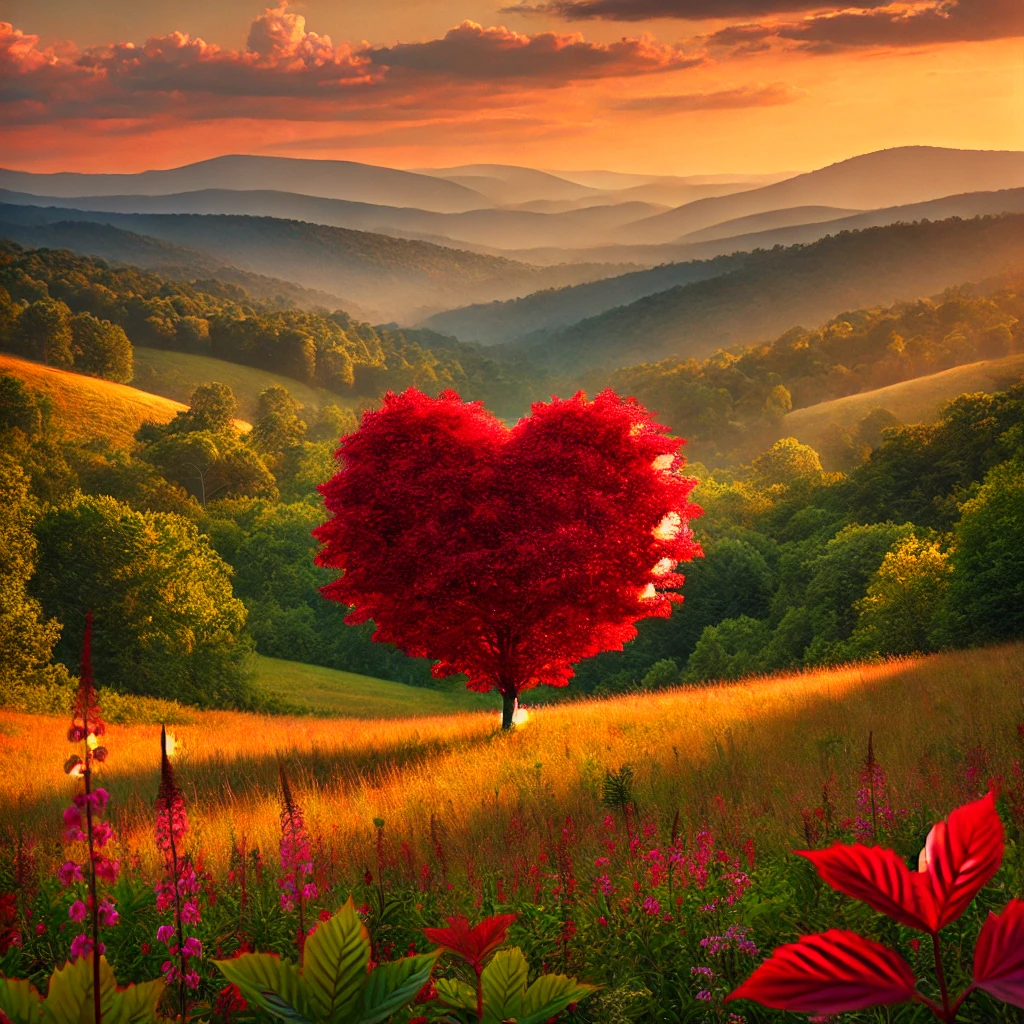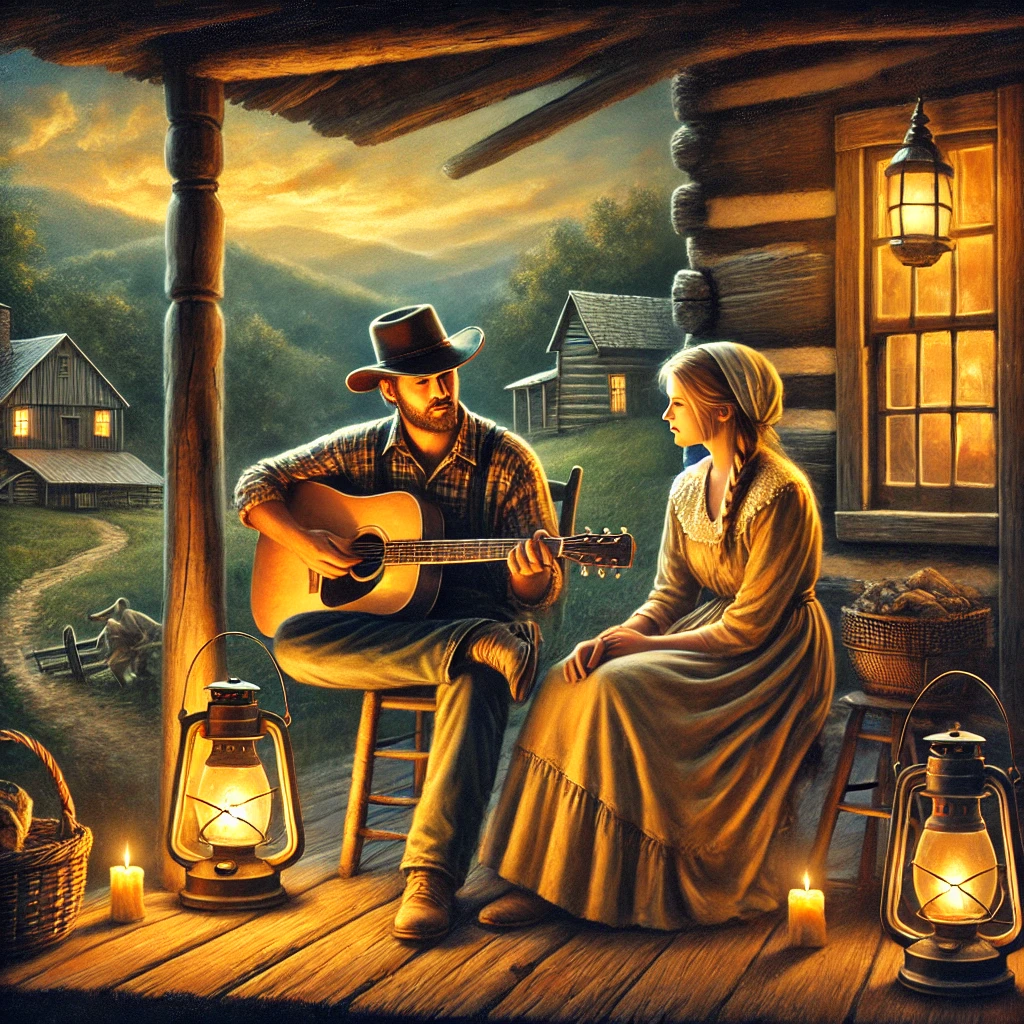Love and Marriage in Old Appalachia

Another Valentine’s Day looms ahead. Some young ladies will be expecting gifts; some young men will hustle at the last minute to grab flowers or candy or secure a coveted dinner reservation. Others, perhaps, will be carefully crafting the perfect message for an online dating profile or swiping through apps, searching for a spark of connection. Though the settings and tools may have evolved, the timeless pursuit of romance remains the same: a blend of hope, effort, and improvisation.
The courtship dance has changed a lot in the digital age. Instead of meeting at school or the shopping mall, many of today’s romantic overtures begin with online “friending” and flirty text exchanges. All the more reason to look back at how love and marriage in Old Appalachia unfolded—when courtship wasn’t just about two people but woven into the fabric of the community.
In Old Appalachia, love and marriage were steeped in tradition. The customs reflected a slower, more deliberate approach to relationships, from barn dances and corn shuckings to shivarees. Let’s look at a few traditions of Appalachian courtship, where romance was often written in the notes of a courting dulcimer or the patterns of a handcrafted love spoon.
Courting in the Community
In Old Appalachia, love and marriage were community-centered. Barn dances, church gatherings, and corn shuckings offered young people opportunities to meet under the watchful eyes of family and neighbors. Barn dances were popular gathering spots, where fiddle music filled the air, and couples took to the dance floor. It was a place where young folks could meet, flirt, and, if lucky, catch someone’s eye—all within earshot of Aunt Sally or Uncle Joe.
It’s easy to see a modern parallel in today’s dating and online matchmaking apps. Just as a barn dance once allowed shy suitors to test the waters, a virtual “like” or swipe right now opens the door to connection. While the venues have changed, the hope for a spark remains timeless.
The Art of Courtship
Mountain folk had a knack for turning the ordinary into the extraordinary. Take the courting dulcimer, for instance. This instrument, providing a fretboard and strings on two sides, was as much a chaperone as a musical tool. Playing together ensured hands stayed busy, and continuous music was a clear signal that the pair was still focused on the task.
Then, there were the handcrafted tokens of affection. Love spoons, carved with intricate designs, carried messages in their patterns—hearts for love, knots for eternity. These gifts weren’t merely ornamental; they were declarations of intent. They were the Appalachian equivalent of a proposal video (minus the drone footage and elaborate choreography).
Handmade gifts still resonate today, though their form may differ. Whether it’s a handwritten note or a custom playlist, the effort to create something personal and meaningful motivates incipient lovers.
From Courtship to Marriage
When it came to tying the knot, the pace could be brisk. Marriages often followed short courtships, driven by practicality as much as passion. Life in the mountains was demanding, and a partnership was seen as a way to share the workload.
Once a couple married, the community celebrated with a shivaree, a raucous event filled with noise, pranks, and good-natured teasing. Newlyweds might be serenaded with pots and pans or subjected to playful antics like rearranging their home while they were away. Shivarees reinforced that marriage wasn’t just between two people—it was a union supported (and occasionally meddled in) by the entire community.
Contrast that with modern weddings, where the focus often lies on individual expression and carefully curated details. Yet, even in today’s world of personalized hashtags and social media, the essence of communal joy endures.

The Role of Religion and Tradition
Faith was woven into Appalachian life’s fabric, shaping how people approached love and marriage. Chaperoned interactions ensured propriety, while weddings were often simple, church-centered affairs. A modest ceremony might include a small gathering, homemade food, and heartfelt prayers, with little fuss about decorations or attire.
These traditions reflected values of humility and sincerity, which many couples today strive to incorporate into their weddings. Minimalist trends—backyard ceremonies and DIY décor—feel like a modern nod to the simplicity of Appalachian nuptials.
Religion also provided a moral framework for marriage. Couples were expected to uphold commitments and face challenges together, a standard that remains relevant in today’s discussions about partnership and perseverance.
Love, Then and Now
Time has transformed courtship and marriage customs. As technology has replaced front-porch serenades with text messages and video calls, the heart of the matter—connection—hasn’t changed.
Returning to that young couple on the porch, playing their courting dulcimer, their story is more than a historical curiosity—it reflects how love and community are timeless.
Let’s take a page from Appalachia’s playbook to celebrate Valentine’s Day. Whether it’s a thoughtfully chosen gift, a shared meal, or simply time spent together, the most meaningful gestures often bring us closer to one another. In the end, love, like a well-played tune, is about the moments we create and the stories we share.
And who knows? Perhaps the best traditions aren’t those we inherit but those we begin anew—guided by the wisdom of the past and the possibilities of the present.


Comments are closed.